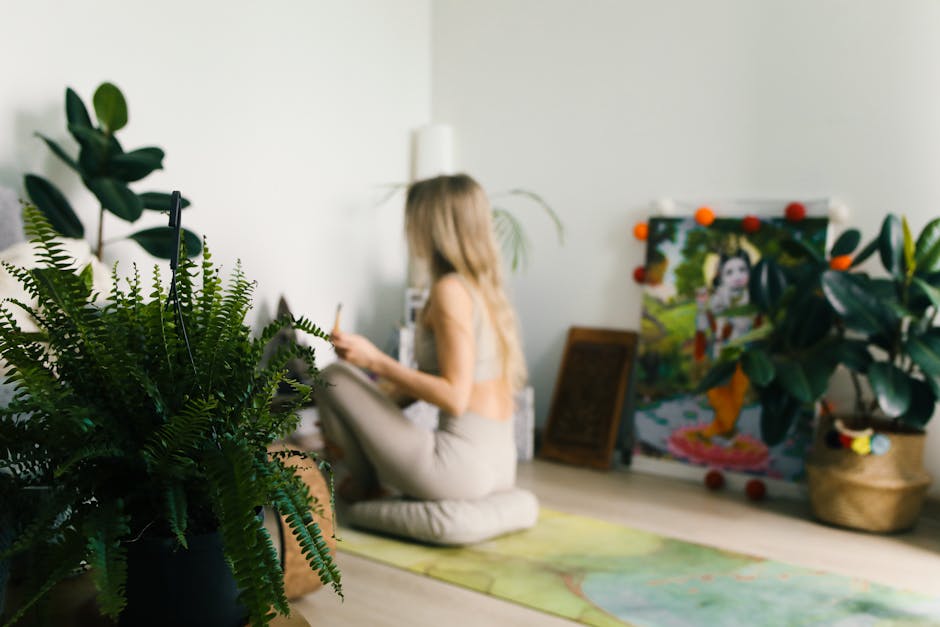Feng Shui for Mental Health: Design Your Space for Balance
In today's fast-paced world, our mental health often takes a backseat as we juggle responsibilities. The environment we inhabit plays a pivotal role in shaping our emotional well-being. Integrating Feng Shui, an ancient Chinese practice focused on creating harmonious environments, can provide the much-needed serenity to our lives. Let’s explore how to design your space to promote emotional balance, enhance well-being, and ultimately uplift your mental health.
Understanding Feng Shui and Its Impact on Mental Health

Feng Shui, translating to 'wind' and 'water,' is an art and science that emphasizes the relationship between humans and their surroundings. It operates on the principle that our environments affect our energy, mindset, and emotional state. When applied thoughtfully, Feng Shui can transform your space into a sanctuary that nourishes your mental well-being, fostering a peaceful mind and balanced emotions.
The Core Principles of Feng Shui

To harness the benefits of Feng Shui for your mental health, it's crucial to understand its foundational principles:
-
Chi Energy: In Feng Shui, Chi denotes the life force or energy surrounding us. A well-lived space allows Chi to flow freely, eliminating stagnant energy that can lead to feelings of anxiety or sadness.
-
Five Elements: Wood, Fire, Earth, Metal, and Water form the five elements of Feng Shui. Each element corresponds to different emotions and mental states. By incorporating these elements thoughtfully, you can influence the ambiance and energy of your space.
-
Yin and Yang: This concept emphasizes balance and harmony. In your environment, a balance of yin (soft, calm) and yang (active, vibrant) contributes to emotional stability.
-
Bagua Map: This Feng Shui tool helps you identify areas of your home that correspond to various aspects of life, such as health, relationships, and career. By mapping your space, you can focus on enhancing areas directly related to your mental wellness.
Creating a Mindful Space with Feng Shui

Transforming your space into a haven for mental health requires a few strategic steps:
Declutter to Refresh Your Mind

One of the simplest yet most effective ways to enhance your mental well-being through Feng Shui is decluttering. Each item you own holds energy; if your space is filled with unnecessary belongings, it may introduce chaos into your mind.
-
Start Small: Begin with a single drawer or corner. As you clear out items, ask yourself if they bring you joy or serve a purpose. Remove anything that doesn’t positively contribute to your well-being.
-
Organize by Function: Arrange items in a way that makes sense for their use. This not only helps in practical terms but also promotes a sense of order and peace.
-
Mindful Disposal: Donate or recycle cluttered items when possible, ensuring that the energy in your spaces is positive and fulfilling.
Incorporate Natural Elements

Bringing the outside in can significantly boost your mental health. This is where the biophilic design comes into play, inviting nature to enhance psychological well-being.
-
Houseplants: Incorporate plants like peace lilies or snake plants. Not only do they purify the air, but they also improve your mood and create a serene atmosphere. Explore more about biophilic design in our guide on revitalizing your space.
-
Natural Light: Maximize the natural light in your home. Sunlight has been shown to increase serotonin levels in the brain, leaving you feeling happier and more energized.
-
Natural Materials: Use furniture and decor made from natural materials like wood, cotton, or stone. These materials promote a connection to nature—a crucial aspect of emotional wellness.
Color Psychology in Your Space
Feng Shui isn’t just about arrangement; it's also about the colors that define your environment. Understanding color psychology can enhance your space to better support your mental state.
-
Warm Colors for Energy: Reds, oranges, and yellows are stimulating and can inspire creativity. They’re excellent choices for spaces where you work or engage in creative activities.
-
Cool Colors for Calm: Blues and greens promote tranquility. These colors work well in bedrooms or relaxation zones, helping to soothe anxiety and foster peace.
-
Balance is Key: Aim for a balance of colors. A room with too much of one color can lead to an overwhelming atmosphere.
Design Your Space to Foster Mindfulness
The concept of mindfulness—being present and fully engaged in the moment—can significantly impact mental health. Feng Shui provides strategies to design your space with mindfulness in mind.
Create a Dedicated Meditation Space
Establishing a tranquil meditation nook within your home can enhance emotional clarity and peace of mind.
-
Choose Calm Colors: Opt for soothing colors, such as soft blues or gentle earth tones, in your meditation area.
-
Add Meaningful Items: Incorporate items that hold personal significance or bring joy, such as meaningful artwork, crystals, or calming scents.
-
Minimize Distractions: Ensure your meditation area is free from distractions. Keep it simple and serene to promote a focused mind.
Scent and Sound for Emotional Well-Being
Aromatherapy and soundscapes can further optimize your mental health environment.
-
Essential Oils: Incorporate calming scents like lavender or chamomile into your space using diffusers or candles. Discover more about the benefits of aromatherapy in our blog on aromatherapy’s hidden benefits.
-
Background Sounds: Play soothing sounds such as gentle rain, ocean waves, or ambient music. This can create a peaceful atmosphere and promote relaxation.
-
Avoid Over-stimulation: Keep the volume moderate and select sounds that resonate with you personally to cultivate the perfect backdrop for serenity.
Adjust Layout and Furniture for Flow
The arrangement of your furniture can significantly impact how energy flows through your space, directly influencing your emotional state.
Living Room Layout for Connectivity
-
Inviting Arrangements: Arrange your seating in a way that encourages conversation and connection. Circular arrangements can promote inclusivity and warmth.
-
Centerpiece for Energy: Incorporate a centerpiece such as a coffee table, plants, or artwork to create a focal point that draws energy together.
Bedroom Layout for Restfulness
-
Optimal Bed Placement: Position your bed in a way that you can see the door but not directly aligned with it—this is ideal for promoting restful sleep while ensuring a sense of safety.
-
Minimize Electronics: Keep electronics away from your sleeping area, as they can disrupt your rest and mental peace.
Enhancing Your Environment Through Intention
The intention behind your space is paramount in Feng Shui. Every change you make should stem from a desire to enhance your mental health and overall well-being.
-
Set Intentions: Before you rearrange or redecorate, take a moment to reflect on what you want to accomplish in your space. Is it peace, inspiration, or creativity?
-
Personal Energy: Surround yourself with items that resonate with your energy and intentions—personal artworks, gifts from loved ones, or travel souvenirs. Every piece in your home should tell your story and uplift your spirit.
Seeking Outside Expertise
Sometimes, the best way to achieve your mental wellness goals through Feng Shui is to connect with an expert. These professionals can offer personalized insights tailored precisely to your needs.
-
Workshops and Classes: Consider attending Feng Shui workshops or classes to deepen your understanding and skills.
-
Consultations: If you're serious about transforming your space, consulting a Feng Shui practitioner could provide profound insights. They can guide you in making impactful changes tailored to your personal situation.
Next Steps
Incorporating Feng Shui principles into your home is not just about decoration—it's about creating a nurturing environment that supports your mental health. Start with small steps, whether it's decluttering your space or introducing plants, and build from there. As you transform your surroundings, give yourself permission to experience the tranquility and energy flow that this ancient practice offers.
Remember to listen to your intuition as you design your space; your environment should reflect your unique personality and aspirations. Allow Feng Shui to guide you toward emotional balance and a heightened sense of well-being.
Explore further resources on enhancing mental health through mindfulness and design. Visit our posts on color psychology or learn how to immerse yourself in nature with nature sounds for more tips on fostering a mental sanctuary at home.
Utilize the power of Feng Shui to take the reins of your mental health journey, creating a space that serves as your personal oasis.



